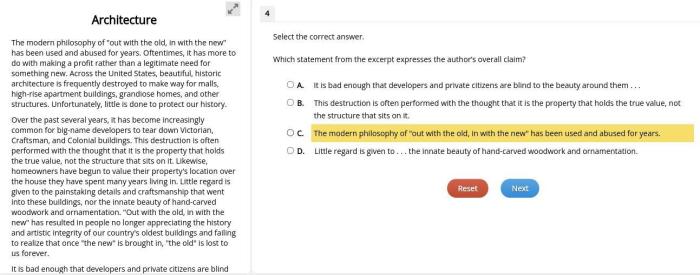Sexism in Of Mice and Men casts a glaring light on the oppressive societal norms that perpetuate gender inequality. Join us as we delve into the novel’s portrayal of sexist language, traditional gender roles, and the impact of male dominance on the characters’ lives and relationships.
Prepare to question the boundaries of gender and explore the ways in which sexism shapes the very fabric of our society.
Gender Roles: Sexism In Of Mice And Men

In the novel “Of Mice and Men”, traditional gender roles are strictly defined and rigidly enforced. These roles shape the characters’ choices, limit their potential, and ultimately contribute to their tragic fates.
Male Roles
Men in the novel are expected to be strong, dominant, and unemotional. They are the breadwinners and protectors, responsible for providing for their families and defending them from harm. This rigid definition of masculinity limits male characters like George and Lennie, as they are forced to suppress their emotions and conform to societal expectations.
Female Roles
Women in the novel are relegated to domestic roles. They are expected to be nurturing, submissive, and dependent on men. This limited role confines female characters like Curley’s wife and excludes them from meaningful participation in society.
Consequences of Gender Roles
The enforcement of traditional gender roles in “Of Mice and Men” has devastating consequences. George and Lennie’s inability to express their emotions leads to Lennie’s tragic death. Curley’s wife’s desperation for attention and connection drives her to seek it from other men, ultimately leading to her own demise.
By challenging these traditional gender roles, Steinbeck exposes their harmful effects and advocates for a more equitable society where individuals can embrace their true selves, regardless of their gender.
Female Characters

In Of Mice and Men, female characters play a limited and often marginalized role. Their experiences and perspectives are shaped by the pervasive sexism of the time period and the male-dominated society in which they live.
The most prominent female character in the novel is Curley’s wife. She is a young, attractive woman who is married to the cruel and abusive Curley. Despite her beauty, Curley’s wife is treated as an object and a possession by her husband.
She is denied any agency or autonomy, and her only purpose seems to be to serve Curley’s needs.
Marginalization of Female Characters
Curley’s wife is not the only female character who is marginalized in the novel. The other female characters, such as Aunt Clara and the waitress, are also treated as secondary or unimportant. They are often dismissed or ignored by the male characters, and their voices are not heard.
The marginalization of female characters in Of Mice and Men reflects the sexism of the time period in which the novel was written. In the early 20th century, women were seen as inferior to men and were denied many of the same rights and opportunities.
Limited Perspectives
The sexism of the time period also shapes the perspectives of the female characters in Of Mice and Men. Curley’s wife, for example, is unable to see herself as anything other than a sexual object. She believes that her only worth is in her physical appearance, and she is constantly trying to please men.
The other female characters in the novel also have limited perspectives. Aunt Clara is a lonely and isolated woman who has never married. The waitress is a hard-working woman who is constantly trying to make ends meet. Both of these characters are trapped in their own circumstances, and they are unable to see beyond their own limited experiences.
Male Dominance

Male dominance is a pervasive theme in Of Mice and Men. The male characters exert power and control over the women in the novel in a variety of ways, both overt and subtle. This dominance contributes to the oppressive atmosphere of the novel, making it difficult for women to escape their subordinate roles.
Lennie’s Sexual Assault of Curley’s Wife, Sexism in of mice and men
One of the most overt examples of male dominance in the novel is Lennie’s sexual assault of Curley’s wife. Lennie is a large, powerful man who is mentally disabled. He does not understand the consequences of his actions, and he is easily manipulated by others.
Curley’s wife is a young, attractive woman who is trapped in an abusive marriage. She is desperate for attention and affection, and she sees Lennie as an easy target. Lennie’s assault of Curley’s wife is a horrific act of violence that underscores the power imbalance between men and women in the novel.
Sexism in “Of Mice and Men” reflects societal norms of the time. The female characters are marginalized and objectified, highlighting the patriarchal nature of the era. However, works like Frida Kahlo’s “Tree of Hope” challenge such norms by depicting women as strong and resilient.
While “Of Mice and Men” presents a bleak portrayal of gender inequality, it also prompts us to reflect on the ongoing struggle for gender equality and the importance of female empowerment.
Impact on Relationships
Sexism significantly hinders the relationships between men and women in Of Mice and Men. It creates a chasm of communication and understanding, fostering a hostile environment that stifles meaningful connections.
Barriers to Communication
Sexism prevents open and honest communication between men and women. Men often dominate conversations, silencing women’s voices. For instance, when George and Lennie encounter the boss’s wife, she attempts to engage with Lennie, but George repeatedly interrupts, demonstrating the prevalent male dominance and silencing of women’s perspectives.
Symbolism and Imagery

The novel “Of Mice and Men” employs symbolism and imagery to reinforce sexist ideas and perpetuate the dominance of male characters.
The landscape, for instance, reflects the harsh and unforgiving nature of the world for women. The Salinas Valley, where the story is set, is described as a place of drought and desolation, with “no water” and “no grass.” This imagery suggests that women are marginalized and denied the resources they need to thrive.
Curley’s Wife
Curley’s wife, the only female character with a speaking role, is often objectified and seen as a threat to the male characters’ masculinity. Her physical appearance is described in detail, emphasizing her sexuality and desirability. However, her inner life and motivations remain largely unexplored, reducing her to a mere object of male desire.
FAQ Corner
How does sexist language contribute to the novel’s atmosphere?
Sexist language reinforces gender stereotypes, perpetuates inequality, and creates a hostile environment for women.
What are the consequences of traditional gender roles in the novel?
Traditional gender roles limit characters’ choices, shape their relationships, and perpetuate a cycle of oppression.
How does the portrayal of female characters reflect the sexism of the time period?
Female characters are often marginalized, objectified, and denied agency, reflecting the societal sexism of the early 20th century.

